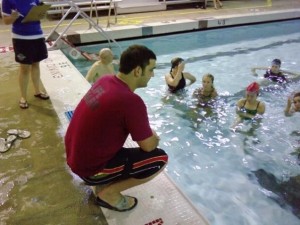Once you hear the term ‘drowning’, many think of an individual drowning in water either in a swimming pool or open water. It is important to bear in mind that dry drowning is another kind of drowning that is rare but can be prevented by observing the basic safety measures in water as well as being familiar with first aid measures in case of related injuries. Dry drowning can manifest within the span of 24 hours of being engaged in any water activity especially skiing or swimming.
Proper safety while in water
It is essential to teach children regarding proper safety while in the water. Dry drowning can occur once water that is swallowed accumulates in the base of the lungs. Understandably, this causes the individual to drown once he/she is out of the water. When children engage in water activities, you have to teach them to keep their mouth closed and plug the nose when underwater to prevent the swallowing of water.
Regular breaks from water activities
If an individual spends more than two hours in any water activity, it is important to take at least a 15 minute break every 2 hours. During the break, the individual can take a snack and drink water. Take note that child have the tendency to swallow water if they are thirsty while swimming or engaging in other water activities.
Always set limits in any water activity
Fatigue is one of the indications that dry drowning can occur within 24 hours of engaging in any water activity. By setting limits on the time spent by children in water, it will help prevent dry drowning by ensuring that they are not too tired while in the water.
Pay attention to the surroundings

If engaged in water activities with children along, you should always be vigilant at all times. Monitor children while swimming or engaging in other water activities in order to prevent dry drowning. Carefully observe to ensure that children are not swallowing water or attempting to breathe while underwater. Additionally, you should also make sure that the child is fully alert while involved in water activities.
Encourage the child to cough
Once the water goes down into the windpipe, the natural response of the body is to cough due to the irritation caused by the fluid. In some cases, this natural response of the body will not work or simply fail. The moment the child gets out of the water, it is recommended to encourage him/her to cough every 15-20 minutes. If you notice a lot of fluid coming out along with the coughs, you have to consult a doctor as soon as possible. Do not hesitate to bring the child to the emergency department of the nearest hospital if you notice that he/she is experiencing breathing difficulty or if he/she is coughing up a lot of fluid. Both are indications of dry drowning and must not be ignored.
